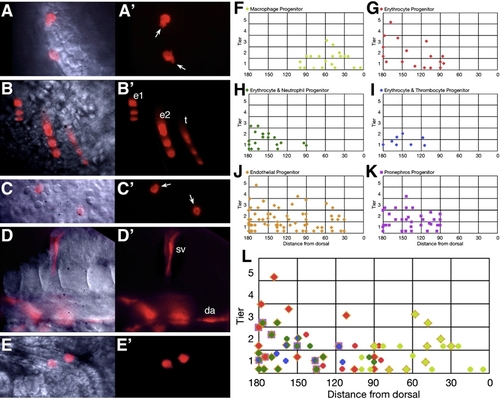Fig. 3
- ID
- ZDB-FIG-090602-26
- Publication
- Warga et al., 2009 - Fate mapping embryonic blood in zebrafish: multi- and unipotential lineages are segregated at gastrulation
- Other Figures
- All Figure Page
- Back to All Figure Page
|
Hematopoietic Progenitors Originate from Both the Dorsal and Ventral Gastrula |
Reprinted from Developmental Cell, 16(5), Warga, R.M., Kane, D.A., and Ho, R.K., Fate mapping embryonic blood in zebrafish: multi- and unipotential lineages are segregated at gastrulation, 744-755, Copyright (2009) with permission from Elsevier. Full text @ Dev. Cell

